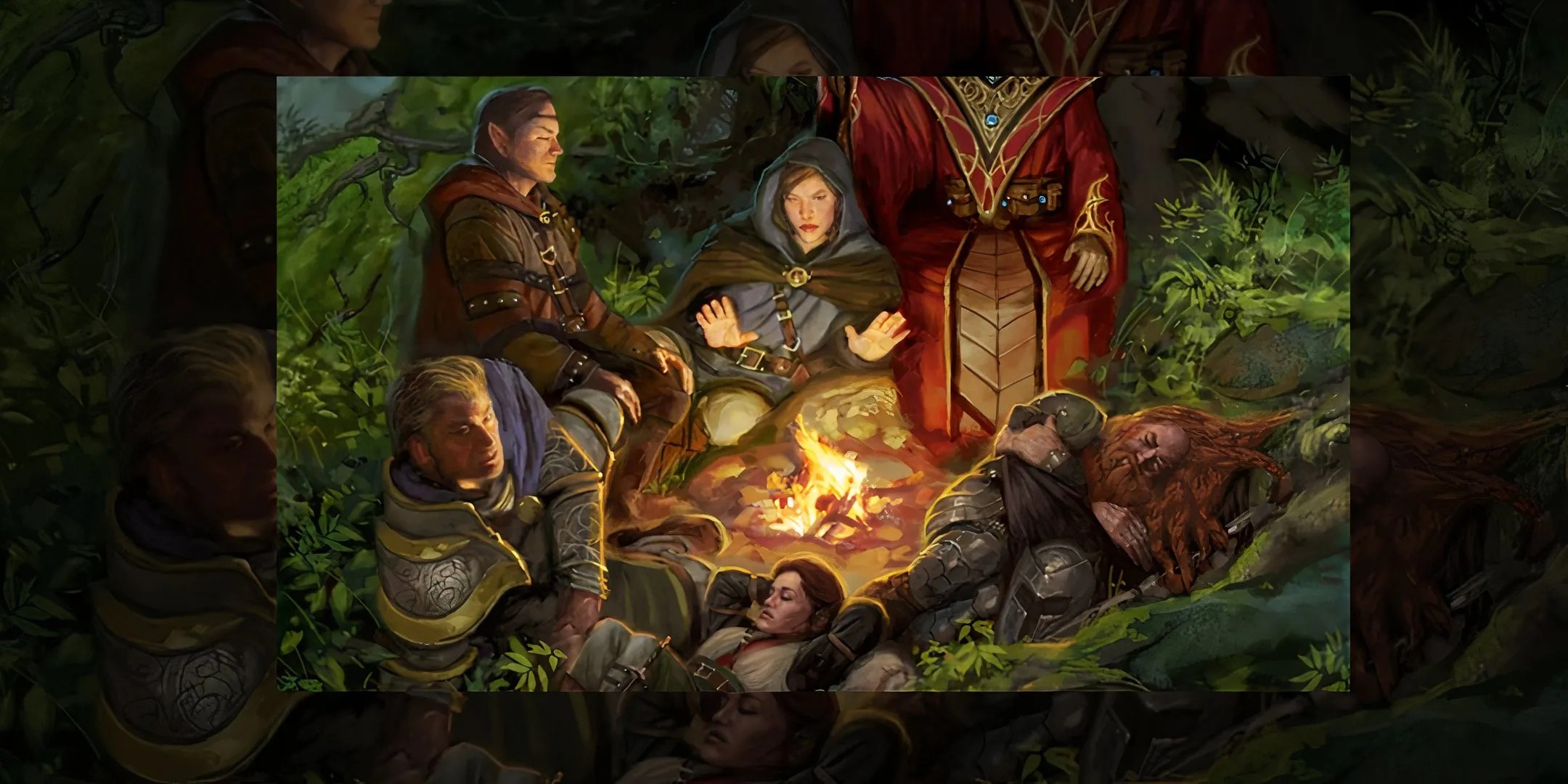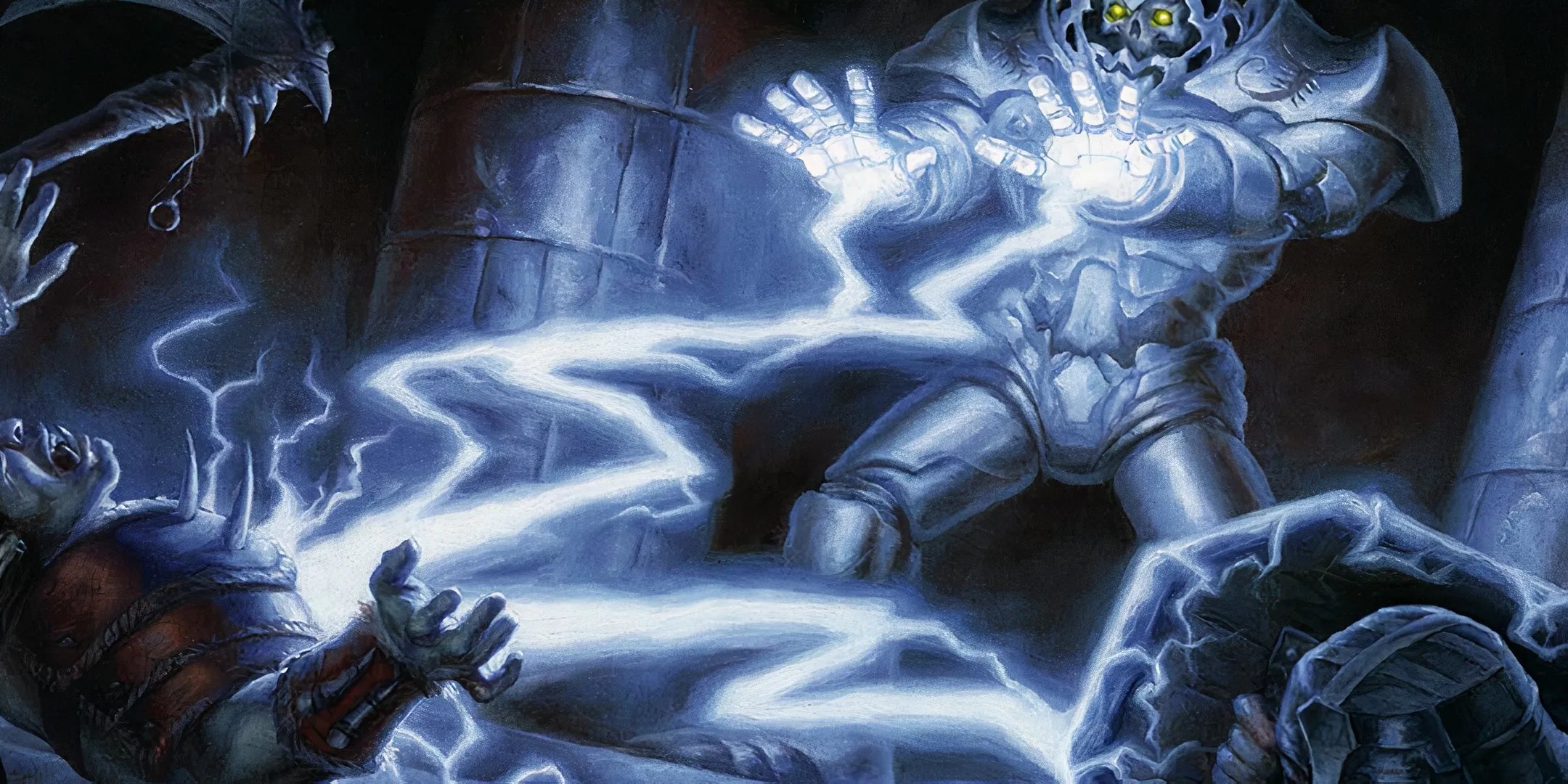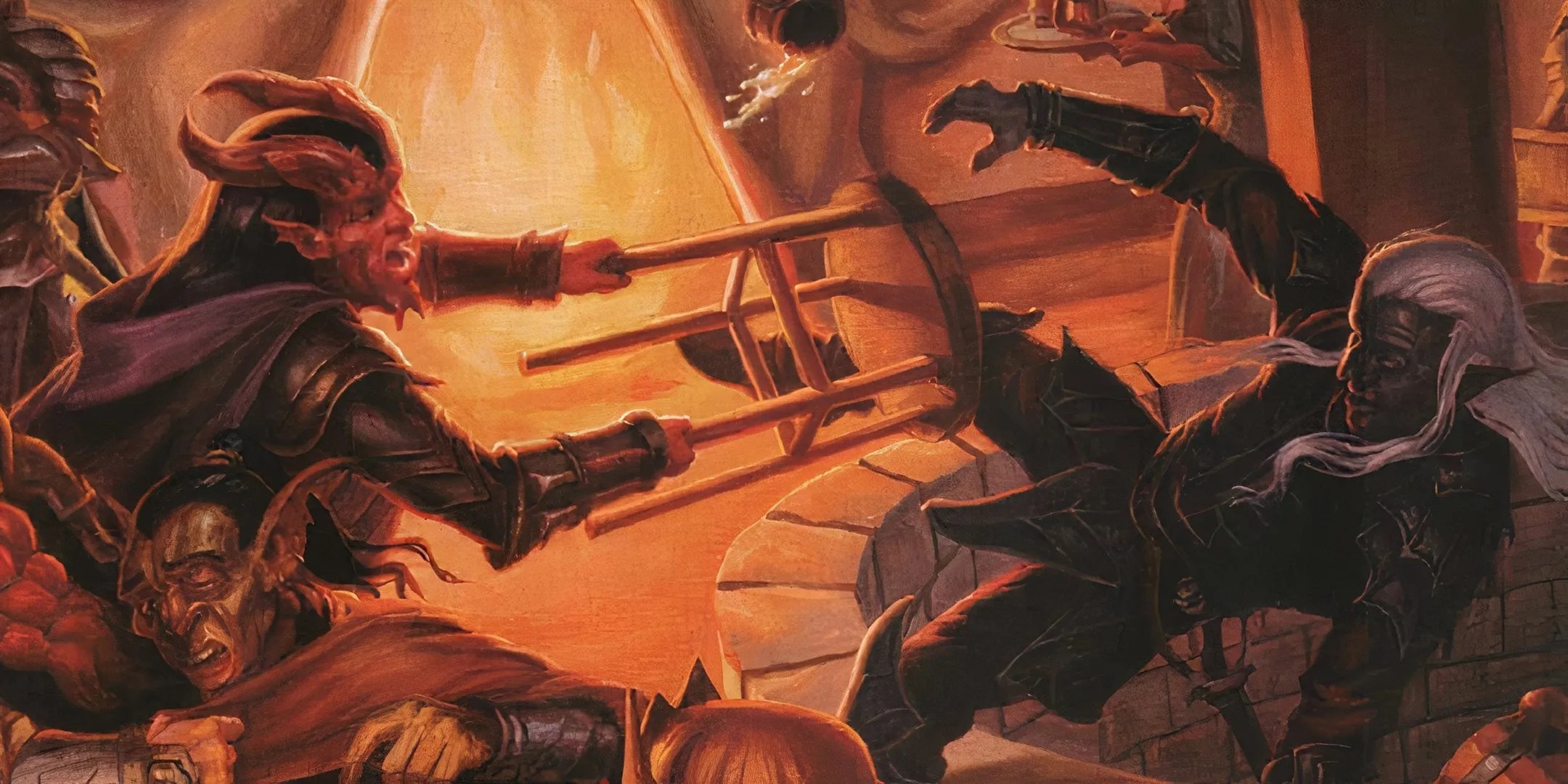Summary
Spellcasters such as the Wizard inDungeons & Dragonsrely on their wealth of Spells to aid them inside and outside of combat. Moreover, these spells grow in intensity and magnitude as these Spellcasters grow in power as well. Technically,D&DSpellcasters who rely on higher-level Spells expend more Spell Slots to pull off these incredible magical feats.
However, spellcasters new and old will almost always rely on a handful of Cantrips to get the job done. After all, these spells don’t cost Spell Slots, and spellcasters can cast them whenever they wish. But, just which Cantrips prove more useful than others?

Updated on Jun 27, 2025, by Rhenn Taguiam:With the 2024 rework of the D&D 5e rulebooks, fans can finally experience more exciting times with the world’s greatest RPG with even more flexible rules. And, for players who want to create the most formidable casters, they need them to have the best Cantrips at their disposal. While Cantrips are often regarded as mere utility, some of them are being positioned as among the most useful of the bunch, such as damage scalers that deal Thunder and Radiant Damage across multiple enemies, one that can potentially hinder an opponent’s next attack, and turning a mere camp fire into quite the dangerous object. Four new entries have been added to the list. Though they aren’t quite build-defining, they’re well worth player considerations.
Ground within range

Concentration, up to 1 Minute
Classes
Artificer, Druid, Sorcerer, Warlock, Wizard
Setting up campis an essential part ofDungeons & Dragonsgameplay, which is what makesCreate Bonfirequite a decent Spell to have. Essentially capable of lighting a fire in a five-foot cube, targets who find themselves in the area must make a DEX Save or take 1d8 Fire Damage. At Level 17, this damage can increase to 4d8, making the Create Bonfire Cantrip quite a dangerous Spell to have under the right circumstances (and not just for camp).
Despite its low-damage nature, the accessible nature of Create Bonfire can make it into quite an effective attack Spell. Granted, its damage is rather mediocre when cast as a single-attack Spell, but it gets more use should an ally manage to grapple a target into submission within the Bonfire’s radius. The only real drawback of the Cantrip is its nature as a Concentration Spell, as there are other more valuable Spells that can be Concentrated on. However, at low-levels, Create Bonfire is a decent emergency Spell to create traps out of doorways or narrow passageways.

1 Creature within Range
Imagine being able to inflict such a numbing frost that a target might lose their limbs in the process — such is the prospect ofFrostbiteas a Cantrip. While not limb-losing in nature, Frostbite when cast inDungeons & Dragonsdoes force a target to roll a CON Save or else take 1d6 Damage and even get Disadvantage on their next weapon attack before the end of their next turn. As an evolving Cantrip, it can deal as much as 4d6 Damage when the character turns Level 17. When combined with the prospect of a target getting Disadvantage on their next weapon attack, Frostbite is a worthwhile Cantrip to get. The only setback here is not being able totarget more than one enemy per cast.

Despite its drawback as a low-damage Cantrip, the dismal d6 damage can be considered tolerable given the Spell’s extra effect, wherein the target gets Disadvantage on their next weapon attack. Granted, even then, Frostbite might not proc properly as the Save to activate this effect is a CON Save — but pair this with a debuff like Bane, and a target might easily find themselves in trouble.
Creatures of choice that can be seen

Cleric
Word of Radianceis the Cleric’s equivalent of weaponized divinity inDungeons & Dragons, as their utterance of a Divine Word can damage all malevolent forces around them. Creatures of their choice within melee range now have to roll a CON Save or take as much as 1d6 Radiant Damage.This Cantrip becomes strongeras the character levels up, getting 1d6 at regular intervals — making it deal up to a whopping 4d6 Radiant Damage at Level 17.
Handling crowds can be easier with Word of Radiance, especially considering its overall damage total when facing crowds of at least three foes. When fighting three enemies, Word of Radiance can get as much as 10 Damage at Level 1 (higher than a mere 1-Handed or Booming Blade) and as high as 21 at Level 5, which by then can only be edged out by an enhanced Booming Blade. Combine this damage output with the fact that this is dealt at multiple enemies at a time, and a character with Word of Radiance can become a menace in melee.

Artificer, Bard, Druid, Sorcerer, Warlock, Wizard
Players canfinally weaponize soundwith theThunderclap, giving them the opportunity to release a burst of sound that can be heard as far as 100 feet away. Creatures within melee range of the caster need to make a CON Save or else take the full brunt of 1d6 Thunder Damage. Casting at higher character levels will automatically boost its damage by another 1d6, up to 4d6 at Level 17, making it a rather horrifying free Spell to cast at higher levels.
Thunderclap becomes especially explosive when facing multiple enemies at a time. At Level 11, Thunderclap can deal as high as 31.5 Damage against four targets — edged out only by an improved Booming Blade at 32 Damage and far outclassing a mere 1-Handed combo at 28.5 Damage. Should players need a go-to Cantrip when rushing head-first into the frontlines, Thunderclap can become a decent punisher against ambushes.

60ft
Creature in range

Artificer, Sorcerer, Wizard
Cantrips have become a staple in any Spellcaster’s arsenal inDungeons & Dragonsgameplay, especially since they give casters the equivalent of combat efficiency that their martial counterparts are known to possess. Such a go-to Cantrip in this regard isRay of Frost, an Evocation Cantrip accessible to Artificers, Sorcerers, and Wizards for its innate efficiency.
When cast, the Spellshoots a beam of freezing lighttoward a target within range. A successful Spell Attack against the target yields 1d8 Cold Damage and reduces the target’s speed by 10 feet. Despite its straightforward movement debuff, the 10-foot difference in distance traveled during the target’s next turn can mean safety for party members closest to them.

The wielder’s weapon
Somatic, Material (a melee weapon)

Artificer, Sorcerer, Warlock, Wizard
The common imagery associated with an enchanter would be their imbuing of a weapon with magical properties, somethingGreen Flame Bladerepresents inDungeons & Dragonsgameplay. This Evocation Cantrip evokes mystical flames to inhabit the weapon held by the Spellcaster, causing it to appear as soon as the caster attacks with it.
When a Green Flame Blade lands a hit on a target, the enchanted weapon deals its regular damage. However, the Spellcaster cancause green flame to leap from the target to another creaturewithin five feet, with the second target suffering damage equal to the Spellcaster’s Spellcasting Ability Modifier. At 5th Level, the melee attack will now cause +1d8 Fire Damage, and the leaping fire will damage the second target with 1d8 + Spellcasting Ability Modifier. At 11th-Level, both damage rolls become +2d8, and at 17th-Level will become +3d8.
Creature in melee range
Being on the receiving end of a melee attack can be the worst thing that can happen to a Spellcaster in the thick of combat, andShocking Graspis one of the best defenses they could have against an opponent in melee range. When cast, a Spellcaster touches a target to deliver a shock.
The user then has to make a Spell Attack, which has advantage if the target is wearing metal armor. If the Spell Attack hits, the opponent takes 1d8 Lightning Damage and may not make Reactions until the beginning of their next turn. This damage becomes 2d8 at 5th-Level, 3d8 at 11th-Level, and 4d8 at 17th-Level. The Spell becomes a particularly useful countermeasure when enemies are at melee range, as the Spellcaster can disengage safely without provoking an Opportunity Attack.
Creature that can see and hear the caster
Bard
One of the most hilarious associations with the Bard would beVicious Mockery, a Cantrip that serves as the magical representation of words that can literally hurt foes. When cast, Vicious Mockery lets the Bard fling a string of insults that can potentially damage opponents. If they fail a WIS Save, the target takes 1d4 Psychic Damage and has Disadvantage on the next Attack Roll it takes on its next turn.
Bards who don’t want to make a weapon attackcan use Vicious Mockery to deal slight damagebut dampen the combat prowess of an enemy - something they can use against stronger foes or even bosses. Dungeon Masters may even provide plus points for players who can actually say what kinds of insults they want to fling at opponents.
10ft
-
Artificer, Bard, Sorcerer, Warlock, Wizard
Spellcasters who want to impress even the most timid of audience members inD&D 5egameplaycan always rely onPrestidigitationto pull off a neat trick. When cast, this Transmutation Cantrip can create up to three harmless sensory effects or small illusory images that may be enough to fool enemies and targets.
Among the Classes that can use this Cantrip, Prestidigitation is among the most flexible small-scale Spells that players need to master to pull off inexpensive effects that last for an extremely short while. These range from anything that can grab the enemy’s attention or distract others during a heist, where getting caught can often mean life or death.
Somatic, Material (Melee Weapon at least 1 SP)
Artificer, Rogue, Sorcerer, Warlock, Wizard
It’s not all the time that a Cantrip inD&Dgameplay can deal damage, which is whyBooming Bladecan be quite an attractive option for players who want to give their spellcasters someadvantage in melee combat. At its core, hitting a target with a melee attack with a Booming Blade will now sheathe them with energy. If they move at least 5 feet before the player’s next turn, they take 1d8 Thunder Damage. At 5th-Level, hitting an enemy with this spell in effect now deals 1d8 Thunder Damage, and moving deals +1d8 Thunder Damage. Reaching 11th and 17th Level will enhance these effects by +1d8 Thunder Damage, both on hit and when moving.
What makes Booming Blade such an interesting option for characters is the way it acts as a mini-buff to a weapon without expending a Spell Slot. At the hands of a Rogue, using Booming Blade and then attacking a foe before using Cunning Action to retreat makes the Cantrip into an efficient hit-and-run weapon. Not only that, taunting the enemy to follow players will then cause extra damage, potentially eliminating pesky mobs.